California’s King Tides: What to Know

The California king tides are here for the winter and many will be flocking to the tide pools to take advantage of these extra low tides in the upcoming weeks and months. Whether you’re an avid tide pooler or a first timer heading out the tide pools, read below for everything you need to know about the 2024 California king tides and how to explore the tide pools.
- Before We Begin
- What Are the King Tides?
- When Are the king tides?
- What You Might See
- What to Expect
- What to Bring
Before we Begin
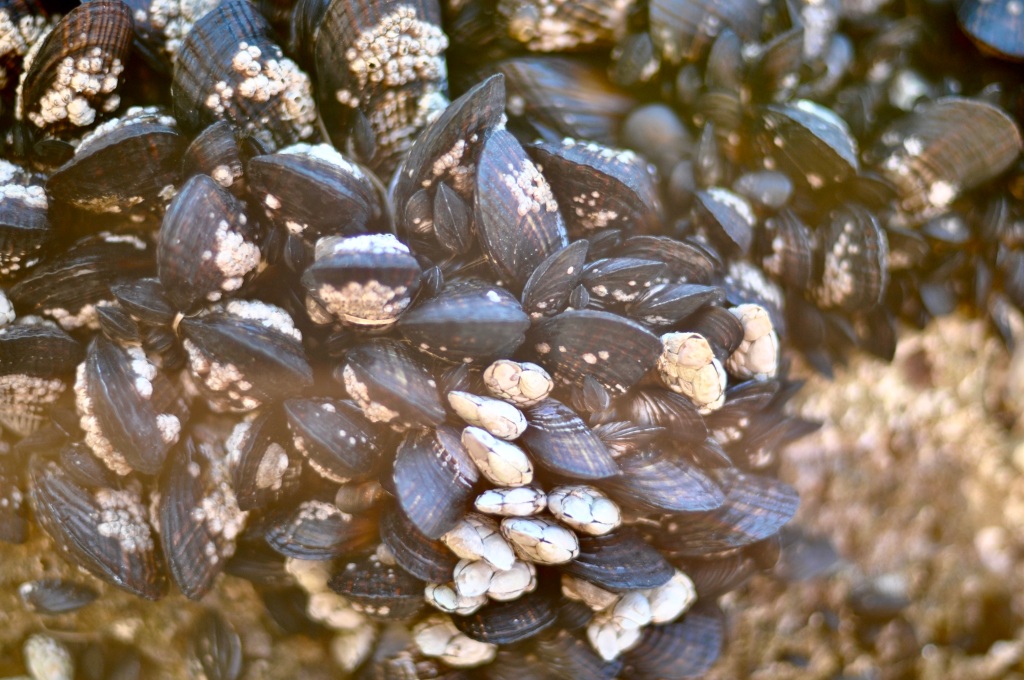
A word of caution before we begin. While the king tides are some of the lowest low tides of the year, they also often come with hordes of people. The recent lowest tides in late December found hundreds of people visiting the tide pools and subsequently less animals to be seen as they were scared off. In addition, it is imperative to not harass wildlife and to respect no collecting zones. Masses of people at the tide pools at once can cause serious damage to the ecosystem.
Do not pick up, take home, or injury animals in any way.
On another note, it is worth mentioning that the king tides are not necessarily going to be the best time to tide pool for beginners. The intertidal zone is bursting with life, but for the casual beach goer or first time tide pooler, an extremely low tide will probably not afford you any more to see than a moderately low tide. A beginner tide pooler will probably see the same animals at a -0.1 tide as they will at a -1.5 tides.
This is not to say that it’s not worth visiting during the king tides, but don’t limit yourself to only when the lowest tides are. If you go on the surrounding days when the tide is still good you will a) avoid the biggest crowds, b) probably get to see more animals because the crowds aren’t scaring them away, and c) help the ecosystem by spreading out the visitors and decreasing compounded ecological impact.
What are the King Tides?
The king tides take place off the coast of California every winter. They are not, as many assume, a scientific phenomenon but instead a colloquial name for these consistent extreme tide cycles in the winter. Beginning in December and going through February, you will find the tides swing more dramatically then usual with certain dates making the “official” king tides, i.e. the lowest of the season.
When are the king tides?
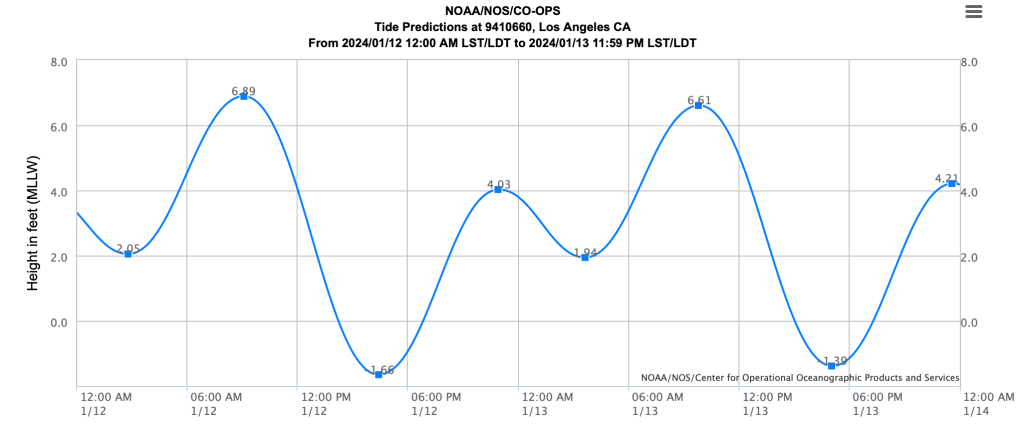
The “official” dates for the California king tides in 2024 are January 11-12 and February 9. The lowest tides of both of these dates have a low of about -1.7, depending on your location. Of course, there are great low tides throughout these months and even in December, with extremely low tides often falling on Christmas Day. You can learn more about king tides projects here.
What you might see
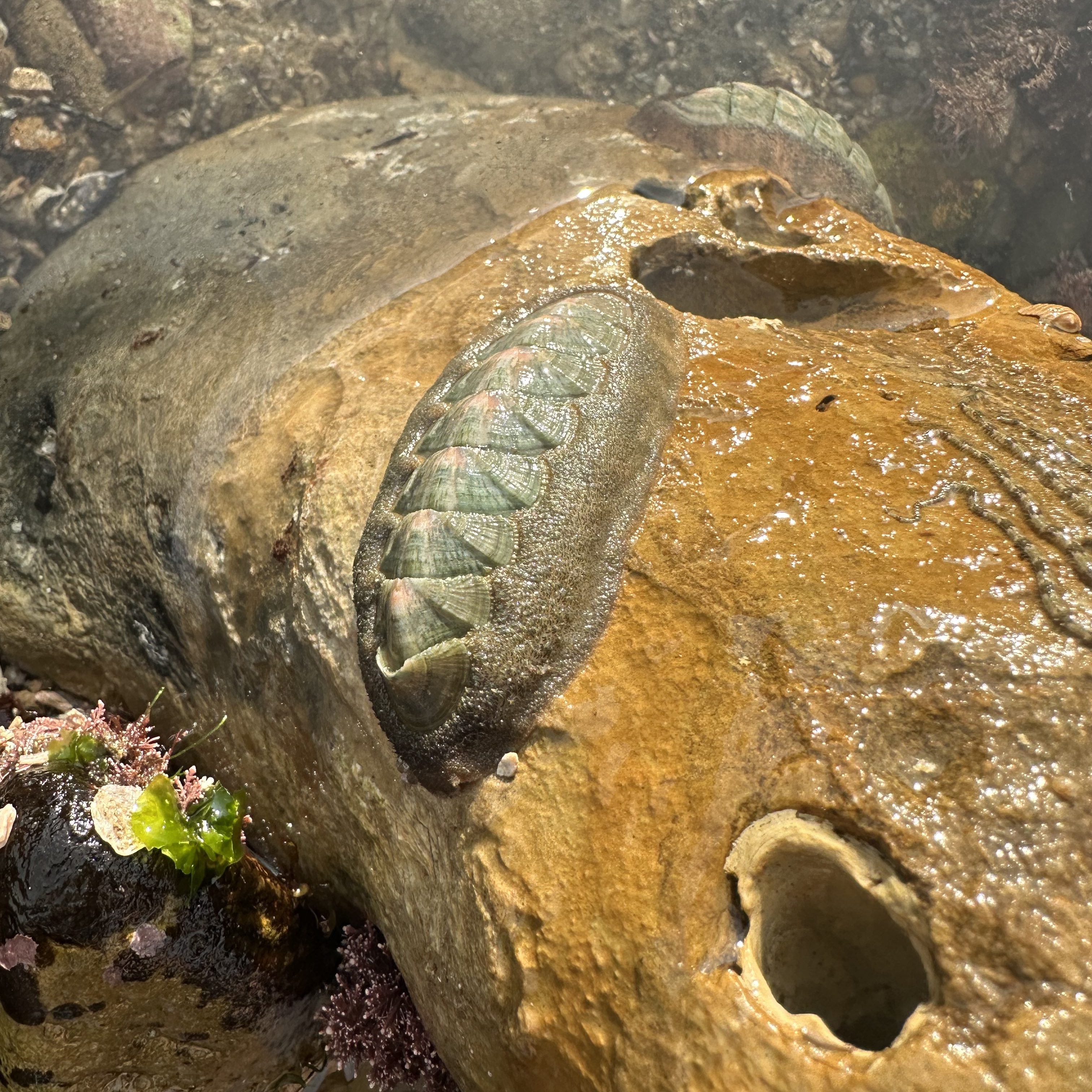
The tide pools are literally overflowing with life and everyone who visits is guaranteed to see something. Extremely low tides mean that low intertidal life that is typically covered will be exposed to air. As we said above, a first time tide pooler will probably not notice many of these rarer animals but will still see many of the common animals.
Tide pool sculpin, opaleye, mussels, chitons, barnacles, sea stars, sea urchins, hermit crabs, shore crabs, even perhaps an octopus or a moray eel are all possibilities to see at the tide pools. You might also be able to see some of the larger animals exposed by the low tide that like to hang out where they won’t dry up. Check out this article to learn about these creatures.
What to expect
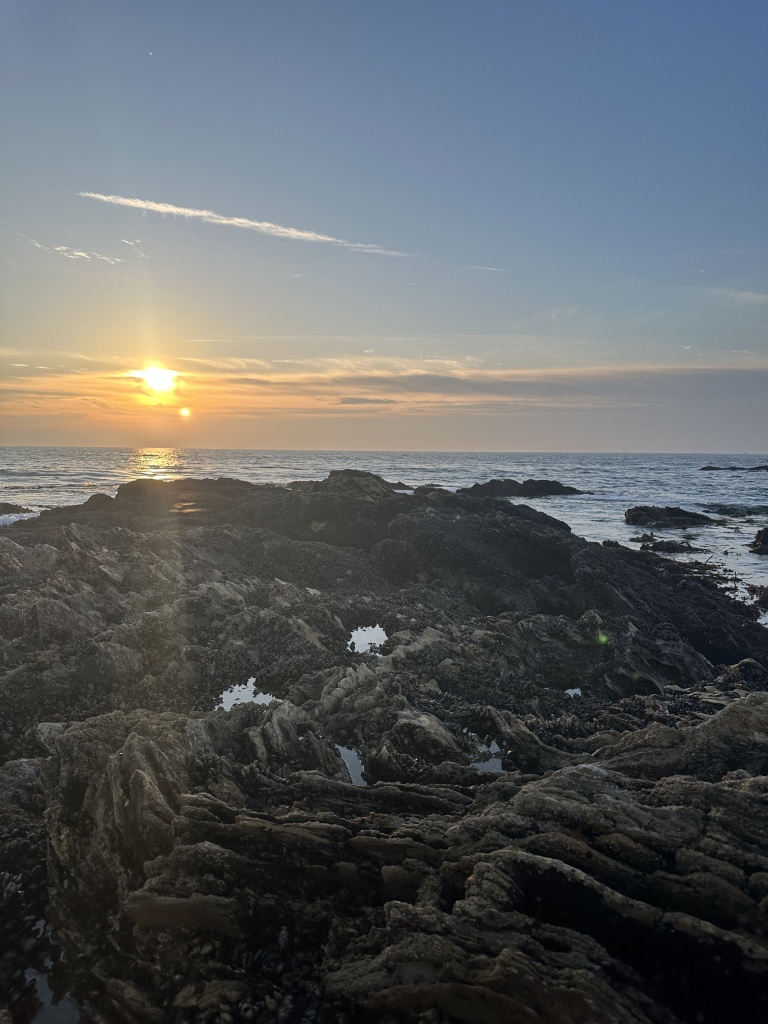
Not to look like this. In reality, you should expect there to be a lot of people on the shores during the king tides. This event gets a substantial amount of publicity and there will be many people on the rocks. Be kind, remember to respect animals, and help others enjoy the tide pools as well.
If you’re a first time tide pooler, you can expect to get wet while at the tide pools. Whether slipping into a pool, getting splashed by the waves, dampened by the mist, or walking through the waves to get to the rocks, you will get wet in some way. Make sure you’re prepared for this in both your clothing and your attitude. No one wants to be soggy, cold, and angry.
You can also expect the terrain to be pretty rough at the tide pools, especially during king tides. While the extent of this depends on the location you visit, you will be walking over sharp, wet, slippy rocks and often using your hands for balance. If you’re bringing kids or those that need special assistance, make sure you are aware of their physical abilities and find a location that has what I call “edge pools” that border between sand and rock. These areas are often more accessible than pools out on the rocks. Read more about tide pooling safety here.
Finally, you can definitely expect to see wildlife during the king tides. From the flower like anemone to the scuttling shore crab, there is always something interesting to see at the tide pools.
What to Bring
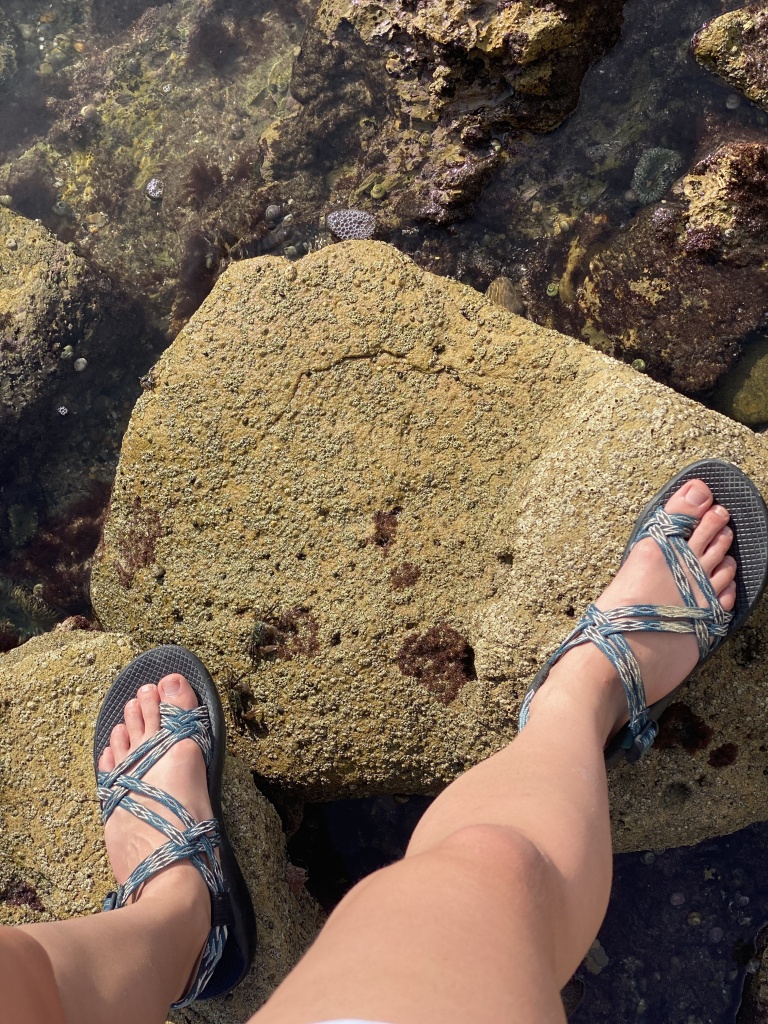
Real quick, let’s go over what to bring to the explore the tide pools during king tides. Tide pooling gear mostly personal preference, and you can read more about it here. But for now, here are the basics. First, you need to wear the right shoes. Shoes can make or break you tide pooling experience as no one has fun with wet feet. Wear water shoes or boots that can get wet. Check out this article for more information about what shoes to wear.
You’ll also need a jacket. I know it’s California, but it can be chilly in the winter, especially by the coast. Also make sure to bring a camera or phone to take photos with; you won’t regret it. Water and maybe a few snacks are a good idea too. Finally, don’t forget to bring plenty of curiosity. Happy tide pooling!
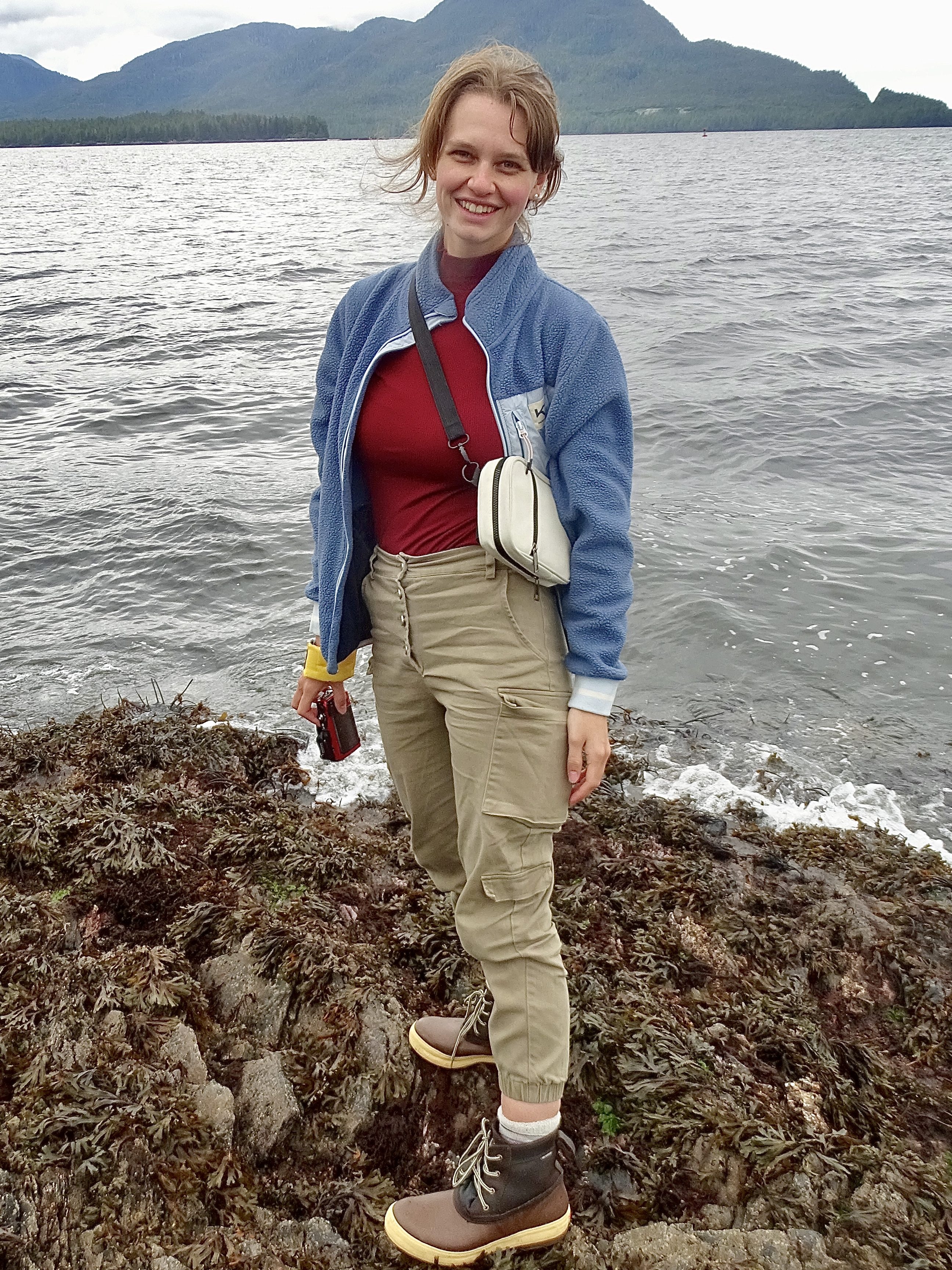
Categories
tags
Subscribe to the blog
Sign up to receive weekly emails with tide pooling information and guides so you never miss a post!

Leave a comment